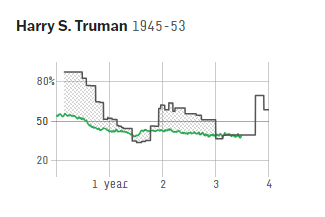Contemporaneous reporting from: 2025/01/20 to Present Day.
>> JUMP TO LATEST DEVELOPMENTS (May-3) >>
| 🎥 | YouTube/Ascendents Net (Jan-20) shared (210 videos, updated: May-3), "2025 Trump's Second Administration: First 100 Days - Ascendents.net News — videos from and related to the start of Donald J. Trump's second term as U.S. President." Playlist for YouTube (includes: The Wall Street Journal, PBS News Hour, Forbes, CNN, CBS News, and others). |

EVERYTHING THAT SOUNDED GOOD — first day in office — a swamp: Trump launched an agenda by signing roughly 200 executive orders, CBS News (Jan-20) reported. The Washington Post (Jan-20) added, Trump claimed there was party unity, even though headlines repeated (e.g. USA Today, Politico, Al Jazeera, and Local 3 Chattanooga TN) that the Republican Party was more divided than ever: X] typical Republican politicians, Y] MAGA Nationalists, Z] Neo-MAGA Oligarchs. Trump's second administration (struggling with the reins to point the elephant in the right direction) was bringing back memories and echoing the chaos/disorganization of his first administration.
"President Trump began his second term Monday with a sweeping order aimed at reversing dozens of former President Biden’s top priorities, from regulations aimed at lowering health care costs, to coronavirus outreach, Affordable Care Act expansions, and protections against gender-based discrimination," STAT (Jan-20) reported.
|
President-elect Donald Trump (Jan-19) held (video) a pre-inauguration rally. "The purpose of the rally was intended to be clear, but the music suggested a far messier — and still unresolved — truth underneath," New York Times had noticed contradictions. Trump spoke, "...and he (Elon) knows those computers better than anybody. All those computers, those vote-counting computers... And we ended up winning..."








